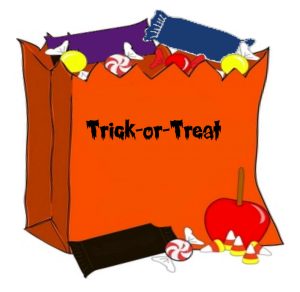 Halloween is an exciting and scary time of year with costumes, trick-or-treating and parties. It is also truly frightening when you look at some parental attitudes and the statistics of Halloween-related injuries and deaths. We offer some tips to help you, your family, guests and trick-or-treaters, a happy and safe Halloween. just as a precaution, we have listed some suggestions in case there is a zombie invasion.
Halloween is an exciting and scary time of year with costumes, trick-or-treating and parties. It is also truly frightening when you look at some parental attitudes and the statistics of Halloween-related injuries and deaths. We offer some tips to help you, your family, guests and trick-or-treaters, a happy and safe Halloween. just as a precaution, we have listed some suggestions in case there is a zombie invasion.
SAFETY ATTITUDES ABOUT HALLOWEEN
Safe Kids Worldwide conducted published a study in October 2011 regarding parental attitudes about Halloween Safety. Parents with children under the age of 12 were asked a number of questions and the study received responses from 935 families. Here are some of the scary findings:
- More than one in nine (12%) parents report that their child ages 5 years or younger were permitted to trick-or-treat without adult supervision.
- Only 35% talked to their child every year about Halloween safety concerns.
- 75% insisted upon selecting a costume with safety in mind. While two-thirds (64%) ensure that their child’s shoes are comfortable and fit well, fewer require use of a flashlight (37%), flame-resistant material (31%), non-toxic makeup (27%), or reflective tape or stripping (18%).
- 40% of parents allowed one or more unsafe items to be used by their child, including a mask (24%), long, baggy or loose clothing (20%), and/or a sword, cane, stick or other sharp object (8%).
Hopefully, with awareness, parents as well as everyone else have placed more emphasis on keeping children safe during Halloween.
HALLOWEEN-RELATED INJURIES AND FATALITIES
According to the United States Consumer Product Safety Commission (CPSC) in 2011:
- There were more than 3,500 Halloween-related injuries were reported between October and November.
- Halloween-related injuries included: burns; lacerations from pumpkin-carving; falls related to ill-fitting costumes; and injuries from collisions due to impaired vision; and
- Pumpkin carving was associated with the most Halloween-related injuries in 2011.
A 2010 study published in Pediatrics found that Halloween is the holiday with the fourth highest number of emergency room visits. According to the American Academy of Pediatrics the top three causes of Halloween-related injuries that require emergency room care are: pedestrian collisions with vehicles; eye injuries from sharp objects; and burns from flammable costumes.
Sperling’s BestPlaces and State Farm teamed up in 2012 to examine crash data for trick-or-treaters on Halloween. After analyzing more than four million records in the Fatality Analysis Reporting System (FARS) from 1990 – 2010 for children 0-18 years of age on October 31, the following was found:
- Halloween Was Deadliest Day of the Year for Child Pedestrian Accidents:
- One hundred and fifteen child pedestrian fatalities occurred on Halloween over the 21 years of our analysis.
- That is an average of 5.5 fatalities each year on October 31, which is more than double the average number of 2.6 fatalities for other days.
- The “Deadliest Hour”:
- Nearly one-fourth (26 out of 115) of accidents occurred from 6:00 – 7:00 p.m.
- Over 60% of the accidents occurred in the 4-hour period from 5:00 to 9:00 p.m.
- Middle of the Block Most Hazardous: Over 70% of the accidents occurred away from an intersection or crosswalk.
- Ages Most at Risk on Halloween: Most of the fatalities occurred with children ages 12-15 (32% of all child fatalities), followed by children ages 5-8 (23%).
- Drivers Who Posed the Greatest Risk: Young drivers ages 15-25 accounted for nearly one-third of all fatal accidents involving child pedestrians on Halloween.
- Drivers Who Posed the Lowest Risk: Drivers ages 36-40 and 61-65 were involved in the fewest child pedestrian fatalities on Halloween. Together, these age groups accounted for nine child pedestrian fatalities (8%) in the 21 years of the study.
- Fatalities Declining: Each of the last six years of the study (2005 – 2010) has seen Halloween child fatalities below the 21 year average of 5.5.
State Farm published an infographic showing this data: Halloween ‘Deadliest Day’ of the Year for Child Pedestrian Fatalities [Infographic]
- According to the National Highway Traffic Safety Administration (NHTSA), in 2011:
38 percent of fatalities on Halloween night occurred in a crash involving a driver or a motorcyclist with a BAC of .08 or higher and 11 percent of those fatalities involved a pedestrian. In fact, over the five years from 2007-2011, 23 percent of pedestrian fatalities on Halloween night involved a drunk driver.
SAFETY TIPS
Parental attitudes, at least in the past, have been not completely focused on preventing Halloween-related injuries. Also, Halloween is a very dangerous holidays in terms of injuries and death. Here are some tips to help keep you, your children, guests and trick-or-treaters safe:
COSTUMES
 Costumes should fit properly. Costumes that are too long or baggy can cause trips, falls or get caught in decorations.
Costumes should fit properly. Costumes that are too long or baggy can cause trips, falls or get caught in decorations.- Wear flame-resistant costumes and stay away from open flames.
- Costume accessories should be short, soft, and flexible.
- Bags or sacks should also be light colored, decorated with reflective tape or glow sticks.
- Use painted make-up or face paint instead of masks, which can obstruct vision. If masks are worn, they should have large eye holes and nose and mouth openings. Encourage your child to remove the mask before crossing a street.
- Use reflective tape, flashlights or glow sticks on costumes to make trick-or-treaters more visible.
- Be careful using makeup as it contain substances that can cause allergic reactions, or that are harsh on skin or will not wash off. Test makeup before Halloween night. Remove it before bedtime to prevent possible skin and eye irritation.
PUMPKIN CARVING
 Use the right tools. Try to use tools to carve pumpkins that were specifically made for this purpose. These are generally safer than using a regular kitchen knife.
Use the right tools. Try to use tools to carve pumpkins that were specifically made for this purpose. These are generally safer than using a regular kitchen knife.- Carve before taking off the top of the pumpkin as you will not be tempted to put your hand inside while carving, risking it getting cut.
- Carve in a clean, dry, and well-lit area.
- Keep your hands and tools clean and dry.
- Point the edges and points of any sharp instruments away from you as much as possible while carving out the design.
- Gently saw back and forth through the pumpkin to complete your design rather than slice.
- Take your time.
- Do not let young children carve.
- Use battery-operated candles rather than real candles.
“UNHAUNTING” YOUR HOUSE
 Be sure walking areas and stairs are well-lit and free of obstacles that could result in falls. Clear off any snow or wet leaves.
Be sure walking areas and stairs are well-lit and free of obstacles that could result in falls. Clear off any snow or wet leaves.- Remove things from your yard that might present a hazard to children who might walk on it rather than on driveways and sidewalks.
- Do not overload extension cords for your decorations.
- Keep dogs and cats away from the front door when trick-or-treaters ring the doorbell.
- Provide healthier treats for trick-or-treaters such as low-calorie treats and drinks.
- Remind drivers to watch out for trick-or-treaters and to drive safely.
- Welcome trick-or-treaters by turning on your exterior lights. If you do not want visitors, keep your exterior lights off.
VEHICLES AND DRIVING
 All motorists need to be especially alert and cautious when driving on Halloween because of the large number of children trick-or-treating.
All motorists need to be especially alert and cautious when driving on Halloween because of the large number of children trick-or-treating.- Be on the lookout for children darting out from between parked cars.
- Watch for children walking on streets, medians and curbs.
- Always enter and exit driveways and alleys carefully.
- Do not drive distracted, while intoxicated or drowsy.
TRICK-OR-TREATING
 Plan a trick-or-treating route in familiar neighborhoods with well-lit streets
Plan a trick-or-treating route in familiar neighborhoods with well-lit streets- Always walk from house to house; do not run.
- Children should not enter a stranger’s house or vehicle.
- Do not let young children trick-or-trick alone. Children should always walk in groups with a trusted adult.
- Look both ways before crossing the street. Use crosswalks wherever possible. Do not let children dart across the street in-between vehicles.
- Only visit well-lit houses. Do not stop at dark houses.
- Visibility is crucial. Carry a flashlight and give younger children a glow stick to wear around his or her neck
- Use sidewalks whenever possible. If there is no sidewalk, walk facing traffic as close to the curb as possible.
- Parents should examine all treats before letting their children eat them. Look for signs of tampering and choking hazards, especially for younger children. Signs of tampering include, but are not limited to, torn wrappers or discolored items.
- Tell children not to accept or eat anything that is not commercially wrapped from strangers.
 ZOMBIES
ZOMBIES
In the case of a zombie invasion, pandemic or apocalypse this Halloween make sure you are prepared. Here are some “Rules” from the movie Zombieland to help:
- A Little Sun Screen Never Hurt Anybody
- Always Carry A Change Of Underwear
- Beware Of Bathrooms
- Bounty Paper Towels
- Cardio
- Check The Back Seat
- Don’t Be A Hero
- Don’t Swing Low
- Double-Knot Your Shoes
- Enjoy The Little Things
- Get A Kick*** Partner
- It’s A Marathon, Not A Sprint, Unless It’s A Sprint, Then Sprint
- Limber Up
- Opportunity Knocks
- Pack Your Stain Stick
- Travel Light
- Use Your Foot
- Wear Seat Belts
- When In Doubt Know Your Way Out
Zombieland: Starring Jesse Eisenberg, Woody Harrelson, Emma Stone and Abigail Breslin; Directed by Ruben Fleischer; United States release: October 2, 2009
Even the Center for Disease Control and Prevention (CDC) offers tips on surviving a zombie apocalypse:
HALLOWEEN SAFETY SOURCES AND RESOURCES
- American Safety Council: Halloween Safety
- Centers for Disease Control and Prevention: Halloween Health and Safety Tips
- Center for Disease Control and Prevention: Preparedness 101: Zombie Pandemic Source
- National Crime Prevention Council (NCPC): Halloween Safety
- National Highway Traffic Safety Administration (NHTSA): SAFETY ADVISORY: NHTSA Offers Halloween Safety Tips
- National Safety Council: Halloween Safety
- Safe Kids: Halloween: A Night for Treats, Not Tragedies
- Safe Kids Worldwide: Halloween Safety: A National Survey of Parents’ Knowledge, Attitudes and Behaviors (October 2011)
- Sperling’s BestPlaces: Halloween is ‘Deadliest Day’ Of The Year For Child Pedestrian Fatalities
- State Farm: Halloween ‘Deadliest Day’ of the Year for Child Pedestrian Fatalities [Infographic]
- United States Consumer Product Safety Commission (CPSC): Halloween Safety: Tips for Selecting Costumes and Décor
- United States Food and Drug Administration (FDA): ‘Lucky 13’ Tips for a Safe Halloween
Everyone at Lapin Law Offices hopes that you have a safe and fun Halloween (and that we are not attacked by zombies).
OTHER SAFETY POSTS
Below are some links to some other Lapin Law Offices’ posts involving safety that you might like to read:
ABOUT LAPIN LAW OFFICES
Lapin Law Offices represents injured, abused and disabled clients with caring, passion and dedication throughout Nebraska. If you or our a loved one is hurt this Halloween because of the fault of another person or company, call us to see how we can help. We also protect Nebraskans from zombies.



